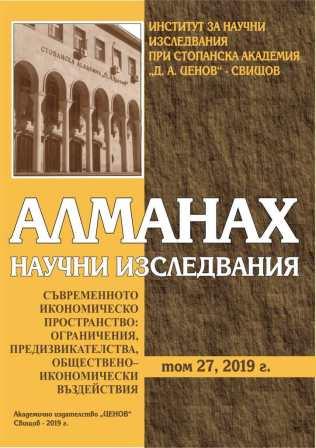ИЗМЕРЕНИЯ НА БЕДНОСТТА В БЪЛГАРИЯ – СТАТИСТИЧЕСКИ АСПЕКТИ1
MEASURING POVERTY IN BULGARIA: STATISTICAL ASPECTS
Author(s): Polya Angelova, Margarita Shopova, Tihomir Varbanov, Yordan Mollov, Ivanka TsvetanovaSubject(s): Economy, Business Economy / Management
Published by: Стопанска академия »Д. А. Ценов«
Keywords: poverty and social exclusion; statistical information; indicators; statistical methods of analysis; trends
Summary/Abstract: Fighting poverty and social exclusion is among the biggest issues of modern social development and a priority of the social policy at both national and European level. The main goal of this paper is to explore the statistical dimensions of poverty in Bulgaria via theoretical justification and empirical analysis of the level, dynamics and determining factors of poverty for the period 2008–2017. The research thesis of the study is that the Gini coefficient and the multiple binary logistic regression models are appropriate analytical tools for analyzing the relationships and identifying the part of the population that is at risk of poverty and social exclusion. In this paper, we present the conceptual basis of poverty as a subject of the statistical analysis. We clarify the organizational and methodological aspects of the data provision. We have performed empirical analysis of the dynamics and factor relationships of poverty in Bulgaria on the basis of the statistical information, obtained from NSI and Eurostat. We have developed multiple regression models and estimated the socio-demographic conditions of poverty. The main results of the study can be summarized in several areas. The application of the statistical approach is a necessity for identifying the level and the factor relationships of poverty. The quantitative measure of poverty is based on comprehensive statistical information that is collected in accordance with the Eurostat methodology and adapted at a national level by the NSI. The dynamics of the Gini coefficient reveals that income inequality of the population is rising. The multiple logistic regression model states that the impact of the variables “gender”, “age” and “region” are statistically significant. The derived probabilities and odds ratios can be used in developing policies for poverty reduction.
Journal: Алманах Научни изследвания
- Issue Year: 27/2019
- Issue No: 1
- Page Range: 156-186
- Page Count: 31
- Language: Bulgarian

